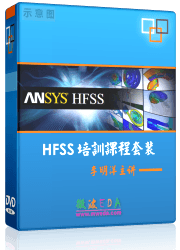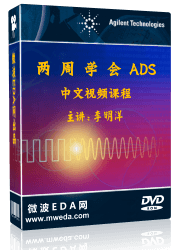Asymptotic Solver Specials (SBR Raytubes)
 Solver
Solver  Start Simulation Start Simulation  Settings Settings
This dialog box provides you with some more advanced control of the
SBR Raytube solver's parameters.
In many cases, however, one of the configuration accuracy defaults (low
/ medium / high) will be sufficient. Please note that this dialog box
will only be shown if the solver type is set to SBR
Raytubes.
The dialog box consists of three frames, the Mesh
frame, the Solver
frame and the
Ray storage frame. The Mesh frame
mainly deals with settings concerning the mesh generation whereas the
Solver frame provides access
to some of the solvers more specific options controlling accuracy and
simulation speed. The Ray storage
frame finally controls the way how the rays are stored for visualization
purposes.
Normal tolerance (degrees)
This parameter specifies the maximum allowable
tolerance of the (planar) triangle normals as compared to the true normals
of the structure's geometry. Lower settings will lead to a more accurate
geometrical representation at the expense of generating more triangles.
For curved triangles, this parameter is quite insensitive and therefore
the default setting can be accepted in most cases. If this parameter is
set to zero, no constraint concerning the normal tolerance will be applied
during the mesh generation.
Surface tolerance
This parameter specifies the maximum allowable
deviation of the (planar) triangle for the actual geometry in model dimensions.
Lower settings will lead to a more accurate geometrical representation
at the expense of generating more triangles. For curved triangles, this
parameter is quite insensitive and therefore the default setting can be
accepted in most cases. If this parameter is set to zero, no constraint
concerning the surface tolerance will be applied during the mesh generation.
Max edge length / wavelength
This setting specifies the maximum allowable
length of the triangle edges as compared to the wave length of the upper
frequency limit as it is specified globally. This parameter has a strong
influence on the number of triangles generated for a particular mesh.
The solver run time will suffer from drastically varying triangle sizes,
so extreme settings should be avoided.
Max edge length / structure diag.
This setting specifies the maximum allowable
length of the triangle edges as compared to the size of the structure
(bounding box diagonal). This parameter has a strong influence on the
number of triangles generated for a particular mesh. The solver run time
will suffer from drastically varying triangle sizes, so extreme settings
should be avoided.
Ray spacing (in wavelengths)
This parameter specifies the distance of the
rays initially launched in wavelengths. The smaller the ray distance,
the better the accuracy at the cost of a higher runtime requirement. Please
note that the adaptive ray sampling can automatically increase the ray
density in critical areas such that relatively large initial ray distances
can be used.
Adaptive ray sampling
This option specifies whether the ray density
is automatically increased in critical areas by subdividing the ray tubes.
It is highly recommended to turn this option on, since this will increase
the accuracy versus performance ratio significantly. The subdivision can
be controlled by the Maximum ray distance
and Minimum ray distance options.
Maximum ray distance (in wavelengths)
This parameter specifies the maximum edge length
of a ray tube in wavelengths before it gets subdivided automatically.
Smaller values correspond to higher accuracies at the cost of a higher
runtime requirement. Please note that this option is only active when
the Adaptive ray sampling option
is turned on.
Minimum ray distance (in wavelengths)
This parameter controls the smallest edge length
of a ray tube in wavelengths during the adaptive subdivision process.
The purpose of this setting is to avoid excessive refinement in critical
areas. Smaller values correspond to higher accuracies at the cost of a
higher runtime requirement. Please note that this option is only active
when the Adaptive ray sampling
option is turned on.
Minimum number of rays
For electrically smaller structures, there may
be too few rays launched due to the Ray
spacing setting. In order to ensure that a reasonable number of
rays are launched to properly illuminate all regions of the structure,
this parameter defines a lower bound for the number of rays. For more
accurate simulations of electrically not very large structures you may
need to increase this parameter.
Exit blockage check
This option specifies whether the visibility
of a reflection point for a particular ray from the current observation
point will be checked or not. For better accuracy it is recommended to
turn this option on. In some cases it may be useful to turn this option
off in order to quickly obtain potentially less accurate results.
Include metallic edge diffraction
This option specifies whether diffraction at
edges should be included in the simulation which will improve the accuracy
at the expense of longer simulation times. It is generally recommended
to turn this option on for more accurate results.
Allow storage of incident rays
This option controls whether the incident rays
will be stored if the corresponding rays option is set for the excitation.
If this option is turned off, ray storage will be suppressed for all incident
rays.
Allow storage of initial hit points
This option controls whether the points where
the incident rays hit the structure will be stored if the corresponding
rays option is set for the excitation. If this option is turned off, the
initial hit point storage will be suppressed for all incident rays.
Allow storage of observed rays
This option controls whether the scattered rays
will be stored if the corresponding rays option is set for the excitation
as well as the observation direction. If this option is turned off, scattered
ray storage will be suppressed.
Max. number of incident rays stored per direction
This option allows you to set an upper limit
for the number of incident rays being stored per direction and per reflection
level. This option is important in order to avoid storing huge files which
may slow down the computation tremendously. Please note that this limit
is set for each reflection level independently. Therefore, a limit of
e.g. 1000 means that up to 1000 rays will be stored which do not intersect
with the structure, another up to 1000 rays will be stored which are reflected
once and so on.
Max. number of initial hit points stored per
direction
This option allows you to set an upper limit
for the number of points where the incident rays hit the structure being
stored per excitation.
Max. number of observed rays stored per direction
This option allows you to set an upper limit
for the number of scattered rays being stored per incident direction and
per reflection level. This option is important in order to avoid storing
huge files which may slow down the computation tremendously. Please note
that this limit is set for each incident direction and reflection level
independently.
Angular tolerance for observed rays (degrees)
This option allows you to set an angular tolerance
for the scattered rays which will be used for assigning these rays to
a particular observation angle.
Defaults...
This button will open another dialog box which
allows to restore the settings for a particular accuracy default (low
/ medium / high).
OK
Accepts the changes and closes
the dialog.
Cancel
Closes this dialog box without
performing any further action.
Help
Shows
this help text.
See also
Asymptotic
Solver Overview, Asymptotic
Solver Settings, Asymptotic
Solver Parameters, Asymptotic
Solver Defaults




HFSS视频教程
ADS视频教程
CST视频教程
Ansoft Designer 中文教程
|